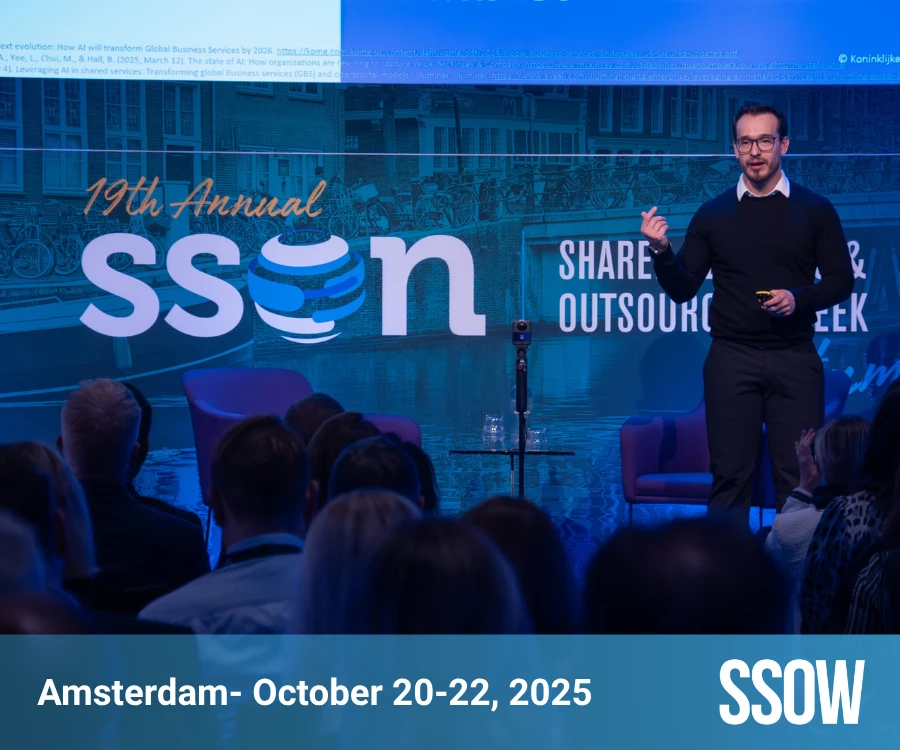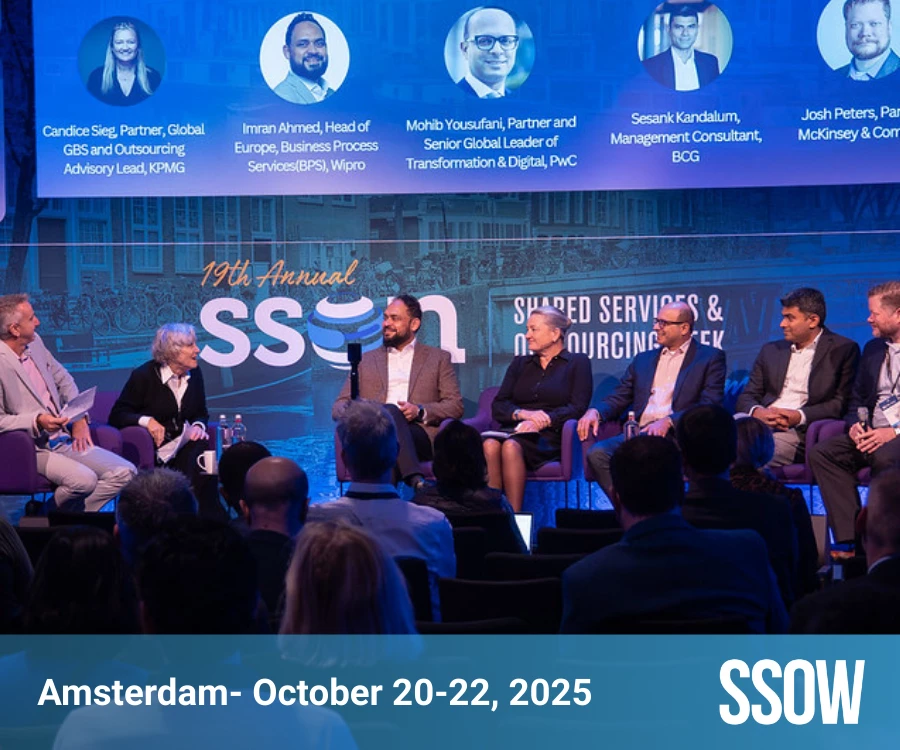How Can GBS Build and Scale RPA – While Keeping Culture Intact?
Add bookmark
Robotic Process Automation (RPA) makes it easy to build, deploy, and manage software robots that interact with digital systems and software – emulating human-like actions. Much like people through a computer, software robots can “understand” what’s on a screen, complete the right keystrokes (as evidenced by simple things like autocorrect on your phone, which may in equal parts be loved and hated!), navigate systems, identify and extract data, and perform a wide range of defined actions.
Software robots can perform some tasks faster and more consistently than people. The challenge is in creating the right systems and processes to build and scale RPA at a GBS level, in a way that keeps culture intact.
Barbara Hodge, Global Online Editor of SSON and Host of SSONext, sat down with Joe Perri, Chief Automation Officer at Change Healthcare, to talk about intelligent automation (IA) in GBS.
Joe is a go-to expert for all things intelligent automation (IA) and RPA (robotic process automation). He leads teams that transform businesses using technology for reduced cost, increased revenue, and higher customer satisfaction. Joe tells us he enjoys building and fixing things and creates value by bringing multiple disciplines together through a focus on strategy, people, processes, and technology to deliver profitable outcomes.
What are the top issues when it comes to scaling RPA?
While RPA can indeed dynamically improve business performance by automating the repetitive processes that cut into the human resource pool (a fear for many), an organization-wide RPA implementation sounds exactly as complicated as it is in reality, Joe tells us. Having a business roadmap or a strategy with a solid pilot project to start off the RPA test is absolutely crucial when it comes to scaling RPA.
Joe continues: “One key factor remains funding. How you build your business case so that the business signs off on it because it makes business sense is a little tricky, and culturally driven. There's often a very restrictive way of looking at how funding is counted and it usually prioritizes savings. Different organizations, depending on the culture, will focus on cost savings in different ways. And it really has a profound effect on how and how fast you can grow your automation program. So funding is a key issue.”
The relationship between culture and automation is key
If there’s one thing we’ve learned that is important over the pandemic, it’s talent. Attracting and fostering talent relies on a strong culture. When automation enters the equation, you need to keenly consider your organization’s culture. How does your organization see and interpret things?
Joe says, “There are so many different governance models, and you can't say there's this ONE that works, because it's not a one-size-fits-all approach to governance. Certainly, given the amount of scale you can get with automation and the different processes you can touch. There needs to be some form of governance. You don't want to create technical debt. So how do you avoid that? I think it varies a lot by organization. So, you've got to be a creative thinker, and think about all your different options, and which ones fit best with your organization and also still supports the growth of your RPA program.”
Placing an emphasis on a culture in which everyone is consistently looking for the win for the organization is key. “Perhaps 50% of your processes can be automated tomorrow; but that might not get you across the line because of various cultural concerns, like, ‘I don't want to let half my staff go.’ What you say and do and how you say and do it, and most importantly, whom you say it to, matters! And that is very culturally driven.”
Solutions lie in a return to change management principles. Work within your culture, and figure out what you can do with automation to transform your business processes. To find the wins, you will need to collaborate cross-functionally, and figure out what works for your GBS structure.
So many acronyms and tools! Where is the biggest impact on the end-to-end process?
Shared Services or GBS exists with the objective to create a seamless end-to-end process. Ideally, getting humans out of the loop in real-time, and making the process faster and more accurate is where you want to deploy technology. Then the human talent in your organization can be moved to alternative tasks that leverage better thinking, particularly in a hybrid, knowledge-driven economy that is faced with a recession.
Joe believes that unexplored answers lie within technology for GBS looking to scale! RPA is the tool that he would choose. “It's the central piece. Automation tools give you the ability to really make an impact. I think that AI, IDP, all that stuff, extends that capability, but just doing AI by itself in business processes probably isn't that meaningful, because you still have to put manual labor on it to get it done. Automation tools that touch the core processes are where the impact is. But that doesn't mean we shouldn't be talking about all these other technologies and tools, because it expands capability.”
Enjoy the audio medium? You’ll find a lot more detail in this full discussion between Joe Perri and Barbara Hodge here on Spotify or iTunes or look for SSONext podcasts wherever you listen to yours!



























